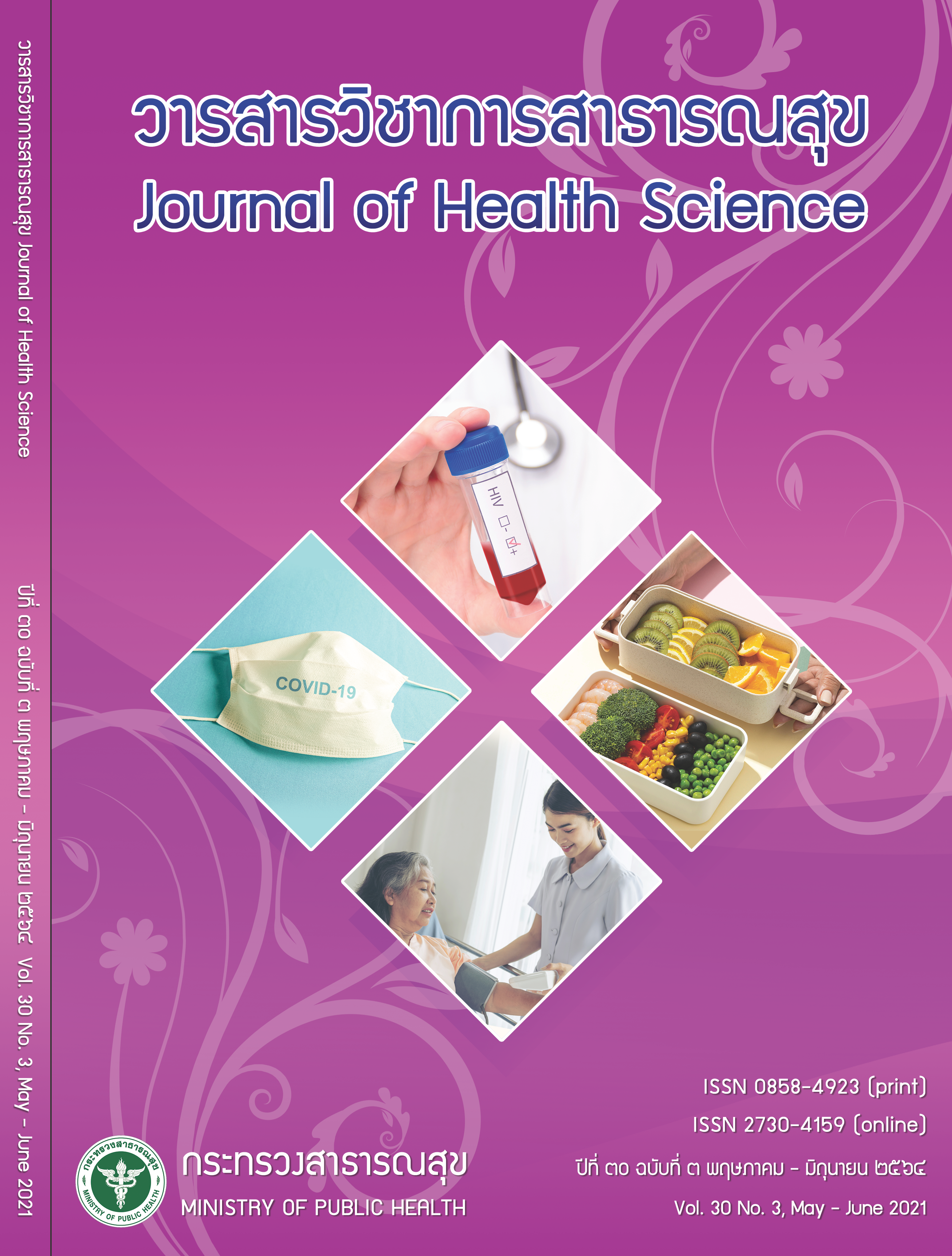Yan Yaw Model: A Model of Larval Indices Surveillance System for Sustainable Dengue Solution in Sub-District Health Promotion Hospital Level
Keywords:
larval indices surveillance system, dengue disease, sub-district health promotion hospitalAbstract
Yan Yaw Model: A Model of Larval Indices Surveillance System for Sustainable Dengue Solution in Sub-District Health Promotion Hospital Level Prayut Seetuka, B.P.H.*; Phichitchai Namnaphon, B.P.H.*; Chumphon Pholprasert, B.P.H.**; Charuean Suwanbamrung, Ph.D.*** * Yan Yaw Sub-district Health Promotion Hospital, Lansaka District, Nakhon Si Thammarat Province; ** Lansaka District Public Health Office, Nakhon Si Thammarat Province; *** Center of Excellence for Dengue Research and Academic Service, Thailand Journal of Health Science 2021;30(3):477-89. The objective objective of this study was to develop the larval indices surveillance system for sustainable dengue solution in responsibility areas of Yan Yaw sub-district health promotion hospital, Lansaka district, Nakhon si Thammarat province. The community participatory action research (CPAR) design was applied for this study. There were 5 steps in the process: (1) preparation, (2) situation assessment, (3) planning and developing surveillance model for dengue mosquito larvae, (4) implementationconducting phase followed the larval indices surveillance system, and (5) evaluation. The study tools were a questionnaires for evaluating knowledge on dengue and understanding on larval indices of which the content validity indices (CVI) were 0.86 and 0.80 respectively. Data analysis was conducted through the use of diagram; and the comparision of knowledge and understading before and after the intervention was performed using chi-square test, and the larval indices level and morbidity rate with graphic presentation. The results found that: the “Yan Yaw model” consisted of four segments which included: (1) village health volunteers conducted survey 10-15 households per each volunteer and recode data with “violet book” “blue book” and “yellow book”, (2) surveillance center processed the data using an online program (http:lim.wu.ac.th), ( 3) utilization of data by responsible personnel, and (4) leaders from each of the 6 villages took necessary control actions. After the model implementation, village health volunteers had significantly better knowledge on dengue control and good understand on larval indices (p<0.01); The level of larval indices decreased significantly leading to the decline in dengue morbidity. In conclusion, the participation of all stakeholders was the important factor to enhance community on the survey of larval indices, eliminate mosquito breeding sites, improve dengue knowledge and understanding on larval indices, and continue communication on the surveillance information.
Downloads
Downloads
Published
How to Cite
Issue
Section
License
Copyright (c) 2021 Journal of Health Science - วารสารวิชาการสาธารณสุข

This work is licensed under a Creative Commons Attribution-NonCommercial-NoDerivatives 4.0 International License.







